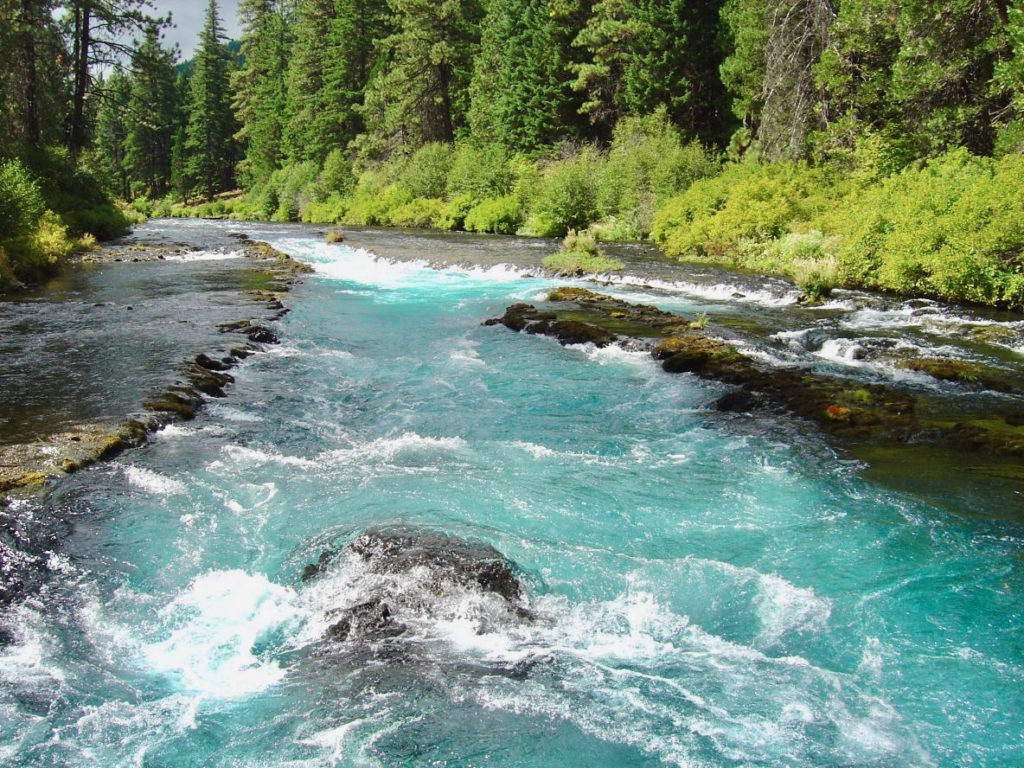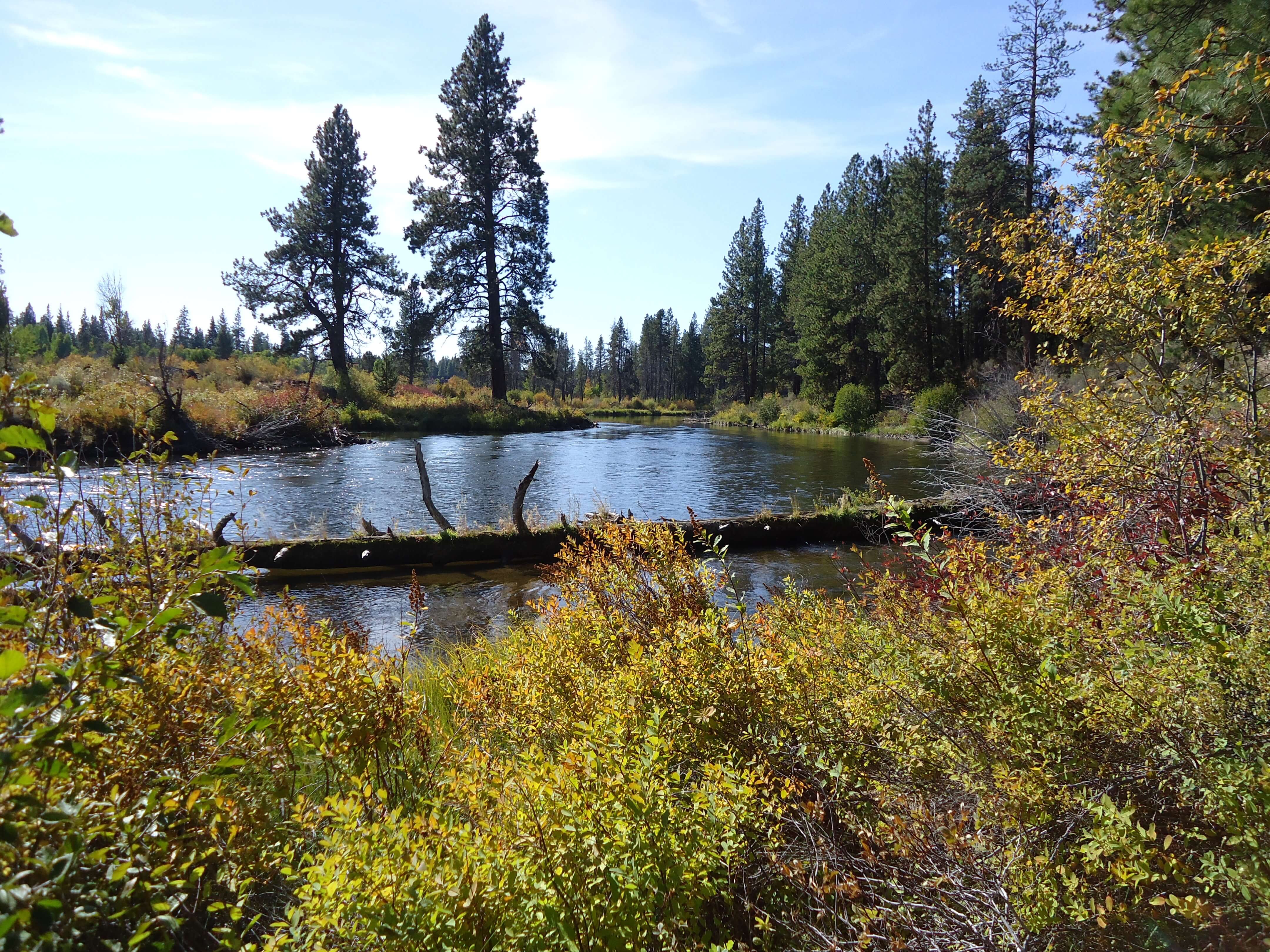Deschutes Basin
WaterWatch has been involved in a number of historic accomplishments in the Deschutes Basin over the last 40 years, and continues to be a leader in improving water management and river health in the region.
Widely considered to be one of the finest trout streams in North America, the Deschutes River is a stronghold for wild redside trout, and the lower river contains significant runs of salmon and steelhead. Deschutes tributaries like the Metolius River also contain some of the last, best refuges for threatened bull trout in Oregon.
The Deschutes River and its tributaries are central to the economy and quality of life in Central Oregon, and the state as a whole, but irrigation withdrawals and dams have taken a heavy toll on river flows in the Deschutes for years.
Today the river and its tributaries face enormous pressure from Central Oregon’s increasing demand for water. Because surface water was fully allocated decades ago, developers have turned to pumping groundwater. But in the Deschutes, new groundwater development directly reduces surface flows, including flows protected by the Instream Water Rights Act and Oregon’s State Scenic Waterways law.


WaterWatch has been involved in numerous accomplishments in the Deschutes Basin over the last 40 years, and our willingness to watchdog all water right allocation and re-allocation decisions — and the enforcement of existing law — is improving water management across the basin.
Our long-term goals in the Deschutes are to:
- Restore streamflows to the Deschutes mainstem and its tributaries to support a healthy ecosystem.
- Preserve the outstanding biological, scenic, and recreational values of the river system.
- Ensure that salmon and steelhead introduced above the Pelton Round Butte Dam have the streamflows needed to thrive.
- Protect streamflows from the impacts of growth and groundwater development.
Ongoing Work
Instream Flow Restoration
Crooked River
WaterWatch helped negotiate and secure passage of the Crooked River Collaborative Water Security and Jobs Act of 2014 is a game changer for the historically-parched Crooked River – and the region. This legislation provides the tools to restore streamflows in 72 miles of the Crooked between Bowman Dam and Lake Billy Chinook.
In addition, passage of the Instream Water Rights Act and the Conserved Water Act has led to 93 instream water rights basin-wide and significant instream flow restoration projects. WaterWatch also compelled Oregon to establish the Deschutes Groundwater Mitigation Program under the state Scenic Waterway Act. With the efforts of the Deschutes River Conservancy and others, these programs have already restored over 64.6 million gallons per day to the Middle Deschutes.
Upper Deschutes River
However, maintaining healthy streamflows in the basin remains a significant issue. For example, the Upper Deschutes River – a potential blue ribbon fishery – is dewatered every fall and winter. Recent fish kills here and in other parts of the basin underscore the need to create solutions sooner rather than later.
WaterWatch has worked for almost a decade with local irrigation districts, government agencies and other stakeholders to address water management in the Upper Deschutes and the rest of the Deschutes Basin. Unfortunately, over that time, there was no significant change in the management of Upper Deschutes flows. Fish and wildlife continued to die every year because of the extreme nature of this artificial flow regime.
On January 11, 2016 WaterWatch filed suit in federal district court against the U.S. Bureau of Reclamation and several irrigation districts over harm caused by their water use operations in the Upper Deschutes. Turning the the Upper Deschutes on and off like an irrigation ditch has caused significant damage to the river’s health, including harm to the Oregon Spotted Frog, a threatened species under federal law.
On October 28, 2016 WaterWatch and our allies reached an interim agreement with the Bureau and districts to temporarily boost flows in the Upper Deschutes. The deal, now expired, also required the Bureau and districts to consult with the U.S. Fish and Wildlife Service to create a long-term water management plan, known as a biological opinion, on a set timeline. In September 2017, the U.S. Fish and Wildlife Service released a biological opinion governing operations for the next two years. The biological opinion also details how irrigation practices in the Upper Deschutes devastated the frog and its habitat, and that the Service expects the eventual restoration of a winter flow minimum of 600 cubic feet per second in the Upper Deschutes. This could help pave the way for a more robust long term plan, known as the Deschutes Basin Habitat Conservation Plan, which is due to be completed by July 2019.
Learn more about this issue here.

Salmon and Steelhead Restoration
In 2004, WaterWatch helped negotiate key provisions of an agreement to finally reintroduce salmon and steelhead above the massive Pelton Round Butte Hydroelectric Project at the confluence of the Deschutes, Crooked, and Metolius rivers. Upper basin fish reintroduction has since become a powerful catalyst for restoration. And while still in the early stages, native steelhead and sockeye have begun to return to their home waters above this project.
WaterWatch and our allies worked to raise funds to install fish passage at the Opal Springs Hydroelectric Project on the Crooked River, which prevents salmon and steelhead from swimming upstream. Installing a ladder at this structure, which is now going forward, will provide fish access to more than 100 miles of spawning and rearing habitat.
